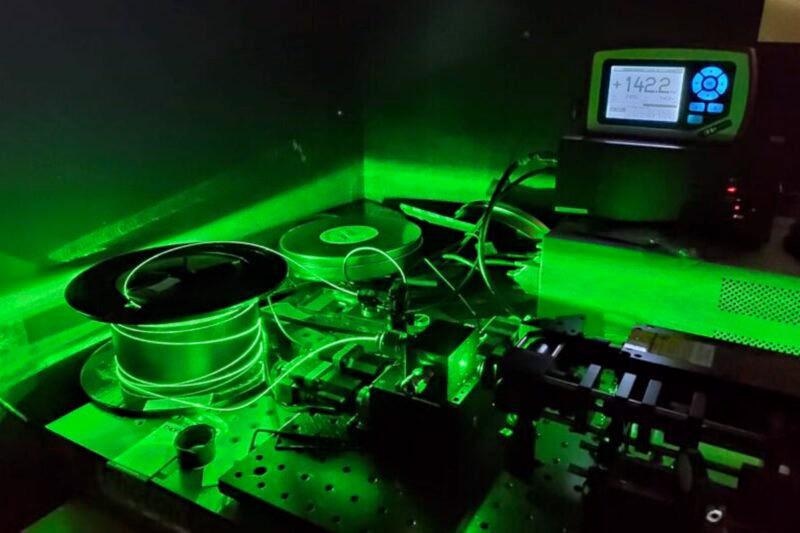Innovate UK Emerging and Enabling Technologies – 26- month project: 01.02.18 to 31.03.20
IS-Instruments in collaboration with the Optoelectronic Research Centre (ORC) at the University of Southampton and contractor to the nuclear industry, Jacobs (formally Wood) under the InnovateUK Emerging and Enabling Technologies programme have developed a novel gas sensing method using a Raman based spectroscopic technique. Raman spectroscopy is becoming a well-established technique demonstrating excellent chemical selectivity allowing for the identification of a diverse range of solid and liquid target samples. The technique however typically suffers from low sensitivity due to the inherently weak optical scattering process. This presents additional challenges when analysing gas phase species due to the diffuse nature of the target material. To overcome this limitation, the optical pathlength through the target gas should be maximised to optimise the interaction of excitation photons with Raman scattering centres which consequently will increase the generation of unique energy shifted Raman photons: the unique chemical fingerprint.

Image Credit: IS-Instruments
One effective method to achieve this requirement in Raman spectroscopy is to use hollow core microstructured fibre optics, where the target gas species is drawn into the internal volume of the hollow core fibre and the Raman spectra of the gas within the fibre is captured via a hardware configuration comprising a laser, dispersive spectrometer and coupling optics. The InnovateUK project has demonstrated that this technology can be used to substantially increase the sensitivity of Raman gas phase measurements while crucially exploiting the selectivity advantage of Raman spectroscopy. The instrument performance testing phase of the project demonstrated measurement of multiple gas species both individually and simultaneously at concentrations.
A highly sensitive and highly selective gas phase Raman measurement system for application and in-situ deployment in a variety of commercial applications, presents an excellent and potentially lucrative opportunity for the Raman spectroscopy community. At present, gas chromatography (GC) based solutions dominate the gas phase metrology sector, representing an estimated annual value of approximately $3 billion by 2022, indicating that demand for such solutions in avariety of industries ranging from nuclear, oil & gas, environmental, automotive, biotechnology & pharmaceuticals, is very strong. A Raman based solution offers the potential to match and even exceed the sensitivity specifications of equivalent GC solutions whilst also offering a substantial improvement in selectivity. Furthermore, a Raman system offers the potential for in-situ gas measurement in short time frames thereby eliminating the requirement to capture a sample for off-site analysis. This results in an overall reduction of measurement cycle time compared to conventional GC based solutions. The Raman system also offers the potential for measurement of highly pressurised gases, up to 120 bar without requiring pressure reduction stages. The Raman system also allows for multiple channel gas detection where individual hollow core fibres can be deployed into different spatially separated regions and sequentially collect Raman spectra from each fibre, thereby generating a gas distribution map of the target environment.
IS-Instruments target introduction to the market in 2020 a hollow core fibre-based Raman solution to compete directly with the GC market offering unique deployment, sensitivity and selectivity advantages over conventionally available options.